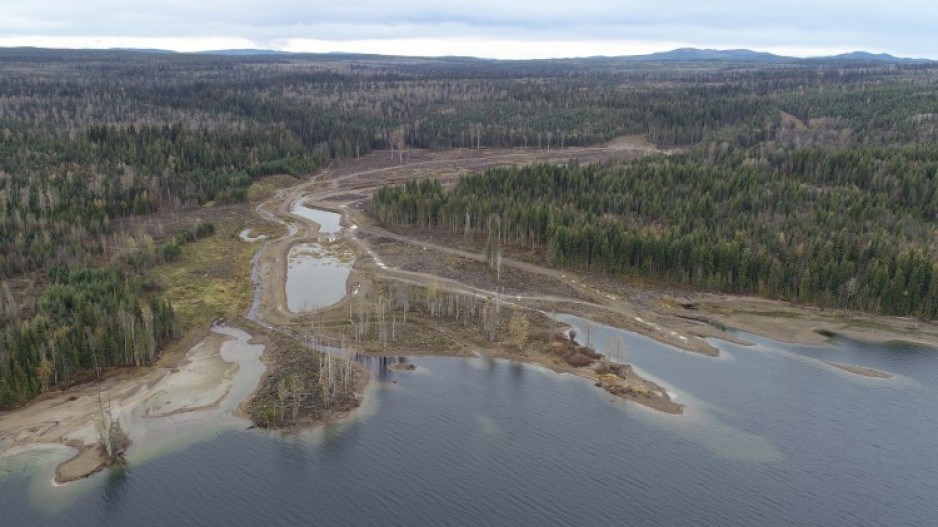Following the collapse of a tailings pond at the Mount Polley mine in 2014, concerns were raised over the potential long-term effects of metals like copper on the aquatic habitat in the two lakes affected by the disaster: Polley and Quesnel.
Officials with the mine said that the chemistry of the ore at the Mount Polley copper-gold mine is such that there is little dissolved copper.
“At Mount Polley, very little dissolved copper comes off those tailings,” Lyn Anglin, the chief science officer for Imperial Metals (TSX:III), told BIV News in 2020.
“In fact, I would say that the studies that we did, and that they are continuing to do, showed that metals are not leaching [from tailings at the bottom of Quesnel Lake]. So they’re sitting down there being very benign.”
But a new study from the University of Lethbridge found “elevated” levels of copper and other metals in anthropods in Quesnel and Polley lakes compared to lakes that were not affected by the 2014 incident, which resulted in 25 million cubic metres of water and mine slurry flowing into Polley Lake, Hazeltine Creek and Quesnel Lake.
In 2018, the researchers collected water, sediment, freshwater scuds (crustaceans), and mayfly larvae from Polley Lake and Quesnel Lake, as well as from Little Lake, which was not affected by the tailings spill..
“Analytical results indicated that invertebrates from sites affected by the tailings breach had elevated metal concentrations relative to those from non-affected or reference sites,” the authors say in the study.
“Hyalella (crustaceans) having direct access to metal-contaminated sediments showed reduced survival and growth relative to those in reference or control treatments. These results suggest that metals from the fine sediments associated with the Mount Polley mine disaster are bioavailable and potentially toxic to epibenthic invertebrates, even several years after the initial breach.
"Although contaminant concentrations were highest immediately after the breach and have been falling ever since, sites are still contaminated several years after the initial event," the study concludes.
"Local reductions in macroinvertebrate populations could lead to reduced food availability for fish and other species that rely on macroinvertebrates for food. Moreover, metal-contaminated macroinvertebrates could serve as a significant source of metals to fish populations, as has been observed previously.
"Much more research is required to fully understand the full extent of the ecological ramifications of this significant mine disaster."
According to Golder Associates, the engineering firm contracted to manage environmental remediation, testing has shown low levels of toxicity in fish, and a fish tagging program that had been implemented in 2013 indicated no fish mortality.
Imperial Metals is currently in the process of restarting the Mount Polley mine.
Asked about the findings of the new study, Anglin said in an email to BIV News that the results of the study are "not new information."
"The results confirm previously published and publicly available data from studies Imperial Metals did as part of their environmental impact assessments," Anglin wrote.
Anglin acknowledged that "small but measurable increases" of metals like copper can be detected in bottom-dwelling organisms in the area affected by the tailings spill, but said "these levels are very low, and below levels of probable ecological effects even for the sensitive aquatic species that Pyle et al studied.
"The probable effects on fish are even less likely, as the levels measured are even further below the levels of concern for fish.
"Because of modern analytical technology, we can measure very low levels of metals in many substances, but because we can measure something, does not mean that it is having a negative impact. In other words, the findings do not appear to be ecologically significant."
BIV News has reached out to the B.C. Ministry of Environment and Climate Change for a response to the recent study.
(The original version of this story has been updated with comments from Imperial Metals' chief science officer.)




